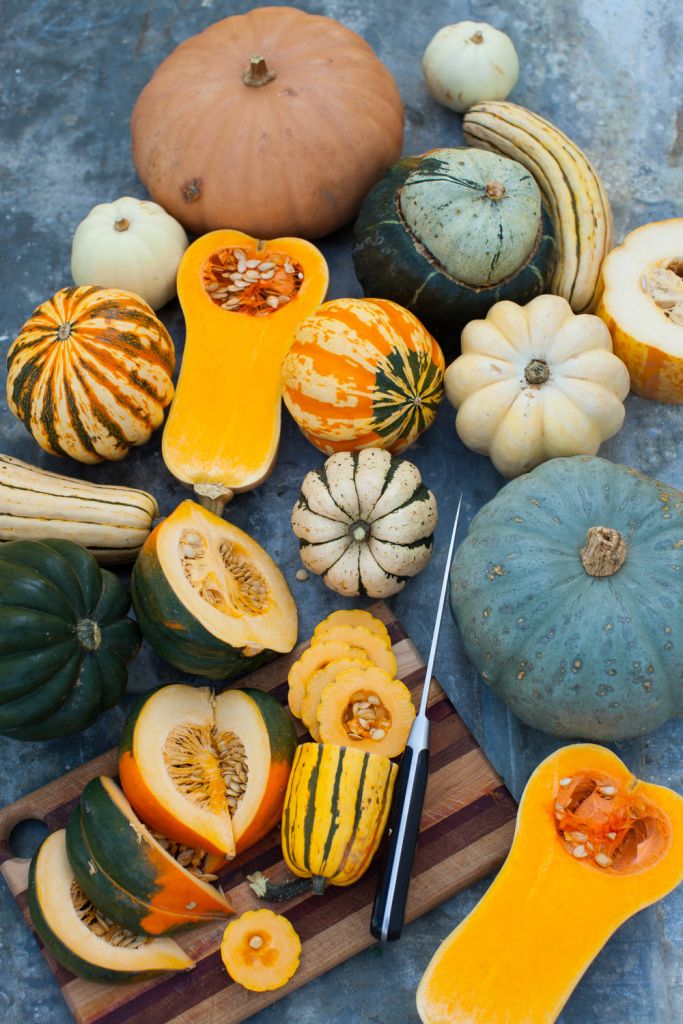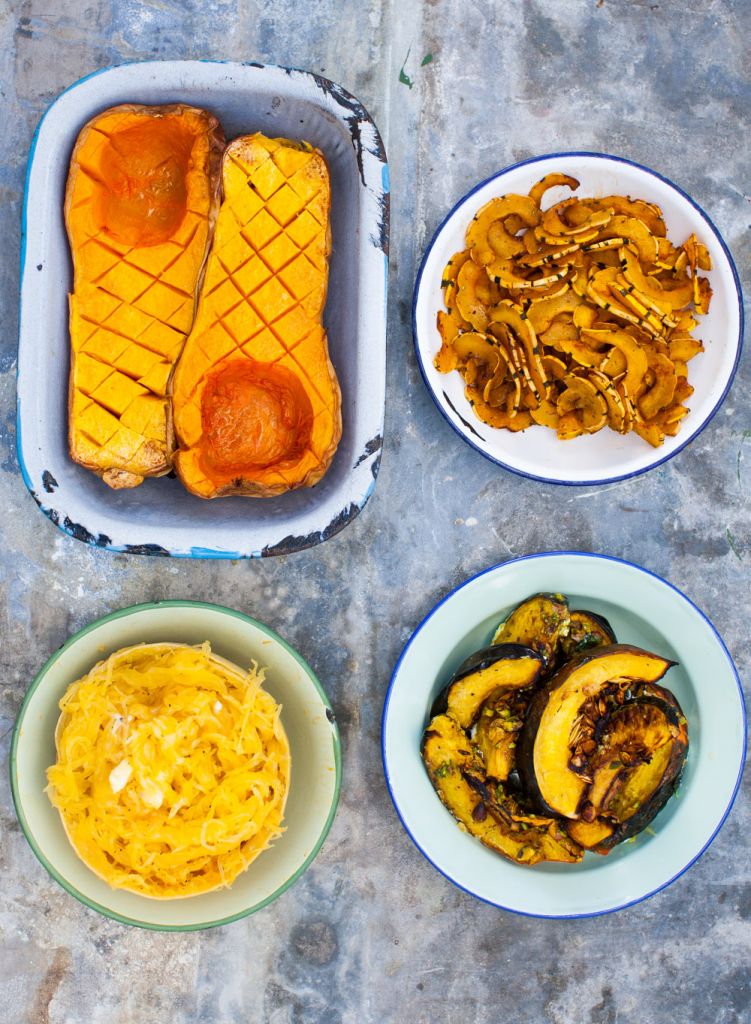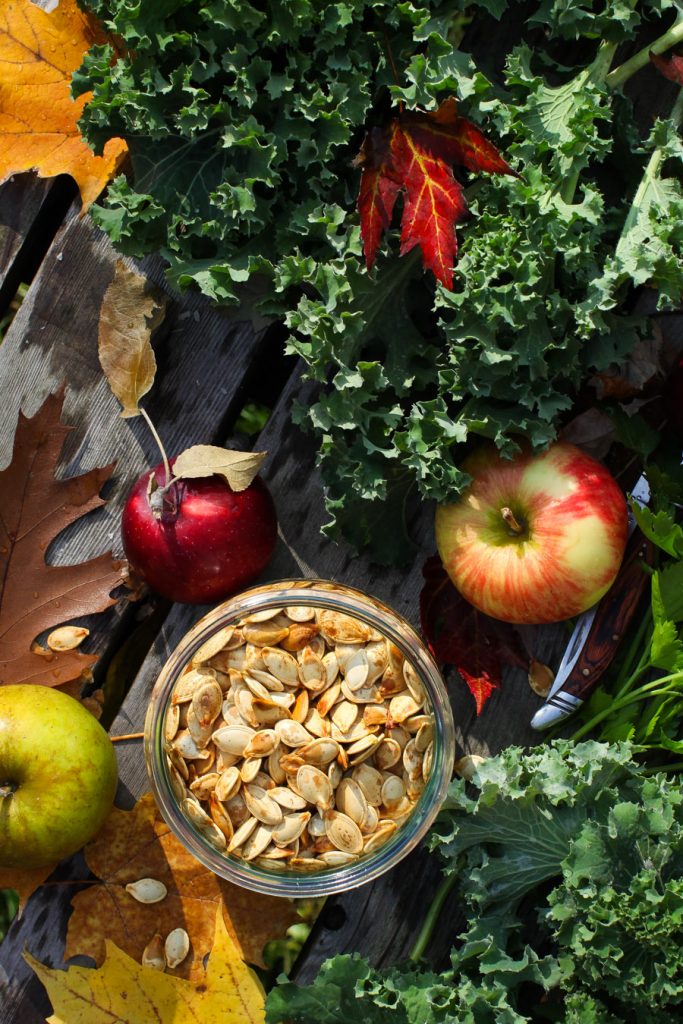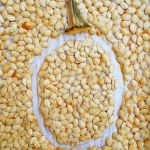Winter Squash 101
by Aimee
Winter squash, in their various colours, shapes and sizes, are a staple ingredient during the cold months.
The world of winter squash and heirloom pumpkins is vast and wonderful, and holds some of our favourite comfort food recipes. Velvety soups, spiced pies, familiar casseroles, delicate curries and sweet breads are just the beginning.
There’s plenty of room for creativity when working with squash, but it’s helpful to be familiar with the varieties and know the best way to prepare them.
A brand new squash season has kicked off and these beauties are going to be around all winter. In a short blog series I’m going to share a few recipes, dish a tutorial or two, and give lots of tips for cooking and serving winter squash.
Choosing and Storing Winter Squash

I can’t resist the warm colours and playful shapes of squash when I visit my local famers market and I always bring home several more than I had planned.
The great thing about winter squash is that even without a root cellar you can store it for months – all you need is a dark space in a cool room. My farmer here in Nova Scotia suggests under the bed, in a cardboard box. It’s dark and out of the way; it’s cool but not cold. Seasonal eating is made easy when you always have a few squash varieties around.
When choosing winter squash, look for clean, thick skin with no scuffs or nicks. For the squash to keep for a month or more, you want a piece of the vine to still be attached and the skin should not give when pressed.
Winter Squash Varieties
We all enjoy eating squash, but how much do we really know about cooking it?
In this series I’m going to specifically look at Butternut, Acorn, Spaghetti and Delicata. However, here’s a list of all the winter squash varieties that will hang out in my kitchen over the next several months.
- Acorn – This dark green acorn-shaped variety pair well with other ingredients and is often served stuffed. The skin is edible and delicious when roasted.
- Butternut – This cream-coloured skin and orange-flesh squash is versatile and easy to find. Works well on its own or in combination with other ingredients.
- Buttercup – A round, green variety with a blueish bulge at the bottom. It is similar in sweetness to butternut, but with a more dense flesh. Can be sautéed, baked or mashed.
- Spaghetti – A yellow, oblong variety that may be used like pasta. It’s light squash flavour helps it to pair well with robust sauces.
- Delicata – A yellow-speckled oblong variety similar to butternut in flavour, but with a lighter color. Edible skin. Beautiful in salads.
- Carnival – Similar in shape to an acorn squash yes slightly smaller. Similar in colour to a delicata. The Carnival is sweet and dense. Edible skin.
- Kabocha – An intensely dark green squat squash. Kabocha means pumpkin in Japanese. It is sweet and delicious. Roast, steam or make soup.
- Hubbard – A large blueish variety, in a tear-drop shape, with vivid orange flesh. Delicious for soup and baking.
- Pumpkin – The familiar fall standby. The smaller Sugar pumpkins have a denser, sweeter, flesh and make a delicious pie.
I’m still learning and identifying the vast number of winter squash that are grown here in North America. Some of the names of the heirloom pumpkins escape me completely!
For a very comprehensive and beautifully photographed list of squash varieties, check out this round-up from White on Rice Couple:

Squash/Pumpkin
Did you know? Winter squash can be used interchangeably with pumpkin and provides a more depth of flavour too. Most of the time when you buy pumpkin in a can, it’s actually squash. It’s true!
Try one – or all – of these recipes but substitute squash instead of pumpkin. Delish.
- Curried Pumpkin with Cinnamon Rice
- Simple Lentil, Pumpkin and Kale Soup
- Pumpkin Challah
- Black-Bottom Maple Pumpkin Pie

Eating Zero Waste and Winter Squash
Of course I have to include a zero waste element to this series! Now, technically, all parts of the winter squash are edible, though not all skin varieties are as tasty as others.
Eat the skins of the following squash: Delicata, Acorn, Carnival, Sweet Dumpling, Red Kuri. Really though, you can eat the skin of most young, just-harvested squash, with the exception of spaghetti squash and squash that looks like the skin has been waxed.
All winter squash and heirloom pumpkin seeds are edible and are best enjoyed roasted and seasoned with salt. Here’s how:

Roasted Winter Squash Seeds
Ingredients
- 1 cup winter squash seeds or pumpkin
- 1 Tablespoon olive oil
- 1/4 teaspoon fine sea salt
Instructions
- Preheat the oven to 375°F. Line a rimmed baking sheet with parchment paper.
- Using your hands, pinch away the squash seeds
from their pulp – you can save the pulp for smoothies. Soak the seeds for 10 minutes in warm water, then drain well. Pat dry with a tea towel. - In a small bowl toss the seeds with the oil and salt. Here you can add additional teaspoon of seasoning of choice such as garlic powder, smoked paprika, homemade pumpkin pie spice or chili powder.
- Spread out in a single layer on a parchment-lined baking tray. Roast for 12-15 minutes, or until golden. Remove and cool. Store in a glass jar for up to one week or freeze for up to eight.
What do you like to do with squash? Leave me your questions in the comments below.
Original article: Winter Squash 101.